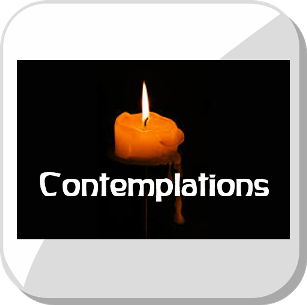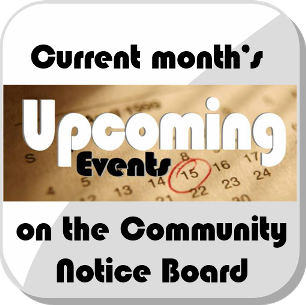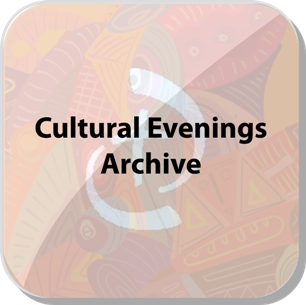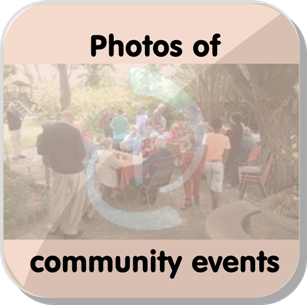AugustList of articles
0 Comments
by Rev. Michaël Merle
In Chapter 21 of The Revelation to John (The Book of the Apocalypse: Revelation) we read part of the description of the New Jerusalem, a picture of a mighty vision experienced by John in the Spiritual World: “The city has a great and high wall and twelve gates. And on the gates twelve angels, and names were written on them: the names of the twelve tribes of the sons of Israel.” (verse 12) This year we hope to uncover an understanding of the twelve ways in which we can enter the New Jerusalem. The way of Asher The name Asher means “happy” or “blessed”. It represents both prosperity and pleasure, and carries the idea of abundance. Asher is, therefore, the dimension of blessing beyond the norm – to be given more than what is necessary for survival. Asher is the epitome of the personality that not only gets what is needed but also enjoys it. The symbol of Asher is the olive tree. Olives are a particularly important crop of the ancient world. It added through the richness of its oil richness to food. It is this gift of riches and richness in both the acquisition of the things that bless, and the pleasure derived from them that is referenced by Jacob (Israel) in his spoken blessing of his son Asher: Shmenech lachmi, literally: His food shall be oily. Asher reminds us that we are to enjoy and celebrate the blessings we receive and to appreciate the abundance of our blessings even when we may be tempted only to look at the challenges and difficulties of the lack that we also suffer. Metaphorically we could see that our food (the spiritual sustenance we have) is indeed prepared with olive oil (enriching our lives with its substance). Report by John-Peter Gernaat
This was of course offered over the period of St. John's-tide in 2023 and those people who attended the course paid for it. The course may be offered again in the future, therefore this report will not be a full report of the course, but a bit of an overview. Languages first develop as spoken languages and in time when the speakers of the language develop a need to write, an alphabet is developed. The Israelites were a family. Jacob was the grandson of Abraham. He had twelve sons and from each of his sons a tribe developed. Jacob changed his name and took the name of Israel, and his sons are known as the sons of Israel. YHWH (Yahweh of the Elohim) recognised in Abraham a new development in humankind, the development of brain-based thinking. YHWH separated Abraham from his family and instructed him to take a long journey. Abraham encountered many different peoples and different languages, spend time in Egypt, and settled in a land that was far from his home. Israel and his sons moved to Egypt after his youngest son was held captive, and only when they arrived in Egypt did they realise that the captor was his second youngest son who had been taken into slavery. The Israelites remained connected with the Egyptian culture until it no longer served them, and Moses led them out of this culture into ‘the promised land’. This land was inhabited by the Canaanite peoples, and we read from scripture that it seems to have been the intention that the Canaanite people welcomed the Israelites and that the two cultures became assimilated. This did not happen, but the language of the two peoples was similar enough that when the Israelites were looking for an alphabet in which to write their spoken language, they turned to the Canaanite alphabet. Early languages were much simpler than modern languages. The entire meaning of a concept was carried in a single sound. Where is today we have a word such as water, consisting of two syllables it carries a single concept, in the ancient Hebrew the sound “M-a” carried the concept of water, but not only water; water carries within it the concept of birth, and the concept of birth carries within it the concept of bringing forth. Therefore this single letter “M-a”, consisting of the sound “m” ending in a short a-sound, carries a multitude of concepts that only become clear in the context in which the sound is used. When this letter then is used in combination with other letters to form a word, the word carries the concepts of each of the letters, and the translation of such a word cannot simply be another word, it becomes a sentence. During this three Sunday programme, we began by looking at the languages in their written form. Hebrew today is a modern language that has little bearing on the ancient Hebrew, although it can trace its origins. Modern Hebrew is written in what is called Assyrian Square script. The script of the Canaanite people used by the ancient Israelites was later inherited by the Phoenicians giving rise to what we call the Phoenician Inherited script. There are great similarities between the two scripts. It is of interest to know about the Phoenician Inherited script because this was the script that the ancient Greeks turned to when choosing their written language and they inverted many of the letters in the Phoenician Inherited script when forming their own letters. For this reason, the ancient Greek script is referred to as the Greek Inverted script. These ancient languages are viewed as consonantal languages, formed as they were under the strong influence of the Elohim, beings of form. Consonants give structure to a language. Vowels, on the other hand, add feeling to a language, and vowels have only come into use as the Archai, the beings of personality, have begun to exert an influence on the development of humanity. The ancient Canaanite language consisted of 22 consonants. A vowel sound was implied within these consonants, and three of the consonants could produce vowel sounds under very specific circumstances. This meant that the ancient Hebrew language essentially had four vowel sounds, a short “a” sound, a full “a” sound, a “i” sound and an “o” sound. We wrote out the a-b-c, the alphabets, of the ancient Hebrew language, the Phoenician Inherited, and the Assyrian Square. With each letter, or sound, we learned the meaning that was ascribed. Finally, we looked at scripture texts from the beginning of Genesis and some prominent names to ascertain what these words were in the ancient Hebrew and how we can understand the meaning of these words when we translate them by translating each of the letters or sounds individually. Here is a brief example: the first letter of the alphabet is the aleph. In ancient Hebrew this pronounced as a short “a” sound, but implied in it was a consonantal “l” sound at the end. This “al” (which later changed to be being pronounced as “el”) had the meaning of “the Divine”, “the Almighty Infinite One”, it implied “first”, and when the Phoenicians inherited the script, under the influence of Taurus, it meant an ox head and therefore denoted strength. Were one to find two of these letters forming a word the meaning could be “God is first”, “God is strong”, “the first is strong”, “the strength of God”, “first of the Almighty”. This simple example shows how difficult it is to translate the ancient Hebrew language when it comes to translating the scriptures. We experimented for ourselves with a translation of the first seven words of genesis and discovered how many different sentences we could make up from the first word that today is pronounced as “Bereshit” and is translated as “in the beginning”, but could more correctly be translated as “in first breath of a beginning”. This process of translation opened for us a new understanding of what a single word like this holds hidden. by John-Peter Gernaat
(This report contains the general information about the Regional Council. The specific details have not been reported here but are available to congregants to request.) When a person or a community is alone in the world the full burden of one's existence in the world is placed upon one's own shoulders. It is for this reason that human beings seek support from other like-minded individuals or communities. As a congregation of The Christian Community, we carry the full financial burden of our physical presence in Johannesburg. However, there is another reality, that our priests are sent to our altar by a central body within The Christian Community. As a congregation we accept a priest that is sent to our altar and in accepting the priest and, very often, their family we accept the financial responsibility that accompanies the sending of a priest. We can count the number of priests who have been sent to our altar in Johannesburg, some for a few years and some for a more extended period of time. When the sending of a priest ends and they move to a new congregation, a certain financial responsibility remains towards their care in their retirement years as a result of the time that the priest has spent in our congregation. When we add up the total responsibility for all the priests that have been in our community and think forward to all the priests that will still be sent to our community, it can become quite overwhelming if we think that we are alone in the world. Being part of a Region that is also connected to the worldwide body of The Christian Community makes a difference in this regard. This is one of the reasons that the Regional Council was birthed here in Southern Africa. The Regional Council for Southern Africa brings together all the congregations of Southern Africa to jointly carry the consciousness that accompanies the sending of priests to our congregations. The financial responsibility of providing a stipend for the daily needs of the priests and their families remains in the realm of the specific congregation, but the financial responsibility that arises when priests are no longer active in a sending to a congregation and the financial responsibility that may arise as a result of unexpected and unforeseen circumstances are supported by the Region as a whole, and is connected to the support of the worldwide body. The Regional Council is a public benefit organisation (PBO) in its own right and represents the communities in Southern Africa. It is therefore the communities that are responsible for the decision-making of the Regional Council. These decisions provide a mandate for the executive of the Regional Council to carry out their work. In order to make these decisions the Regional Council meets annually. A part of this work is to conduct an annual general meeting (AGM) as is required in law for a public benefit organisation. Another part of the work is to come to a deeper understanding of the needs of the individual congregations and see if there is a way that the Regional Council can support one or more of the congregations in a specific manner. It is for this reason that the community representatives that attend the Regional Council, and through their attendance at the Regional Council, are considered part of the Regional Council, playing a vital role for the congregation that they represent. It is also for this reason that the Regional Council meets in the various congregations on a rotational basis, so that the local congregants can also participate at times and feel connected to the greater picture. The foresight that has gone into establishing the Regional Council is highly praiseworthy and our Lenker and the synod of priests who have supported this endeavour together with the community representatives have placed our Region on a more secure footing as we enter the second century of our existence. As the Johannesburg congregation we must not lose sight of the fact that now the Hillcrest congregation is our affiliate. I cannot end this report without expressing gratitude for the hospitality received in the Windhoek community and the manner in which the Windhoek community supported the meeting of the Regional Council. We were treated to wonderful meals, and we were very graciously hosted by members of the congregation. It was also wonderful to experience and participate in the celebration of the Act of Consecration of Man in the magnificent church in Windhoek. |
Article Archives
December 2023
2022 - January to December
2021 - January to December 2020 - January to December 2019 - January to December 2018 - January to December 2017 - January to December 2016 - January to December 2015 - January to December 2014 - November & December 2013 - July to December 2013 - January to June 2012 - April to December Send us your photos of community events.
Articles (prefaced by month number)
All
|




 RSS Feed
RSS Feed